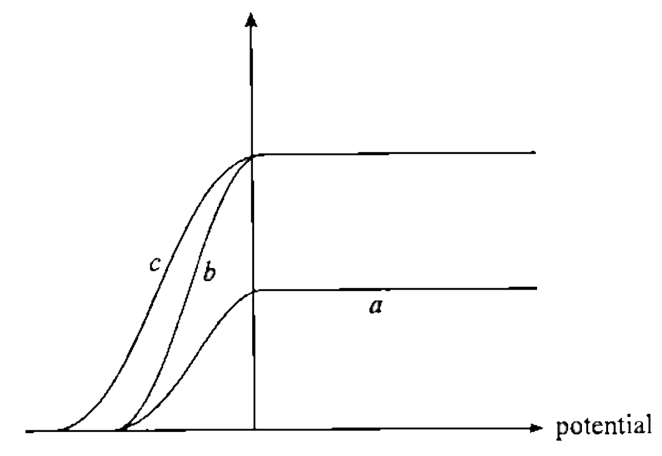In a photoelectric experiment anode potential is ploted againest plate currect.

A and B will have different intensities while B and C will have different frequencies
B and C will have different intensities while A and C will have different frequencies
A and B will have different intensities while A and C will have different frequencies
B and B will have equal intensities while A and B will have different frequencies
The correct Answer is:D
From the graph it is clear that A and B have the same stopping potential and therefore, the sure frequency Also B and C have the same intensity
Topper's Solved these Questions
- MODERN PHYSICSBOOK - SUNIL BATRA (41 YEARS IITJEE PHYSICS)CHAPTER - MODERN PHYSICSEXERCISE - MCQ (One Correct Answer
1 Videos
- ELECTROSTATICSBOOK - SUNIL BATRA (41 YEARS IITJEE PHYSICS)CHAPTER - ELECTROSTATICSEXERCISE - Comprehension Based Questions
2 Videos
- MOVING CHARGES AND MAGNETISMBOOK - SUNIL BATRA (41 YEARS IITJEE PHYSICS)CHAPTER - MOVING CHARGES AND MAGNETISMEXERCISE - MCQs(d )
1 Videos
Similar Questions
In a photoelectric experiment, the potential required to stop the ejection of electrons from cathode is 4V. What is the value of maximum kinetic energy of emitted Photoelectrons?
View SolutionIn photoelectric experiment the plot between anode potential and photoelectric current is shown in figure 2.3.1. Which of the following is correct:

View Solution
Knowledge Check
In a photoelectric experiment anode potential is plotted against plate current.Then
 AA and B will have different intensities while B and C will have different frequencies.BB and C will have different intensities while A and C will have different frequencies.CA and B will have different intensities while A and C will have different frequencies.DA and B will have equal intensities while B and C will have different frequencies.
AA and B will have different intensities while B and C will have different frequencies.BB and C will have different intensities while A and C will have different frequencies.CA and B will have different intensities while A and C will have different frequencies.DA and B will have equal intensities while B and C will have different frequencies.In a photoelectric experiment, if stopping potential is applied, then photocurrent becomes zero. This means that:
Athe emission of photoelectrons is stoppedBthe photoelectrons are emitted but are reabsorbed by the emitter metalCthe photoelectrons are accumulated near the collector plateDthe photoelectrons are dispersed from the sides of the apparatus.In a photoelectric experiment the stopping potential for the incident light of wavelength 4000Å is 2 volt. If the wavelength be changed to 3000 Å, the stopping potential will be
A2VBzeroCless than 2 VDmore than 2 V
In a photoelectric experiment, two metal pairs plates A and B are used for a given light intensity I and frequency f. work function of metal B is more than that of A. The correct variation of stopping potential difference versus frequency is given by:
View SolutionIn photoelectric effect experiment potential difference between plates increases keeping incident light on cathode plate remains unchanged which of the following is correct about saturation current :
View SolutionIf in a photoelectric experiment, the stopping potential is 1.5 volts, what is the maximum kinetic energy of a photoelectrons?
View SolutionIn photoelectric effect, stopping potential depends on
View SolutionIn photoelectric effect, stopping potential depends on
View Solution
